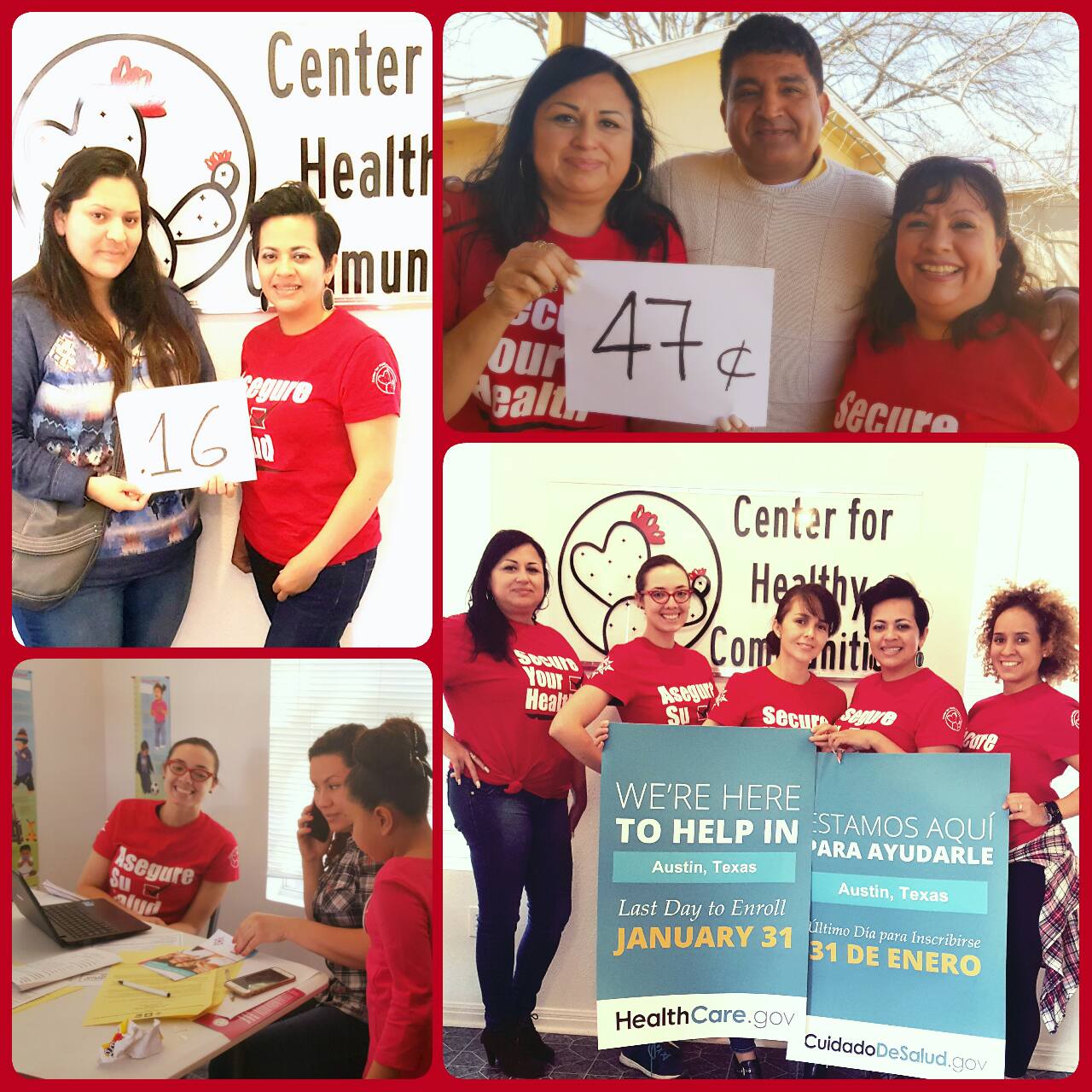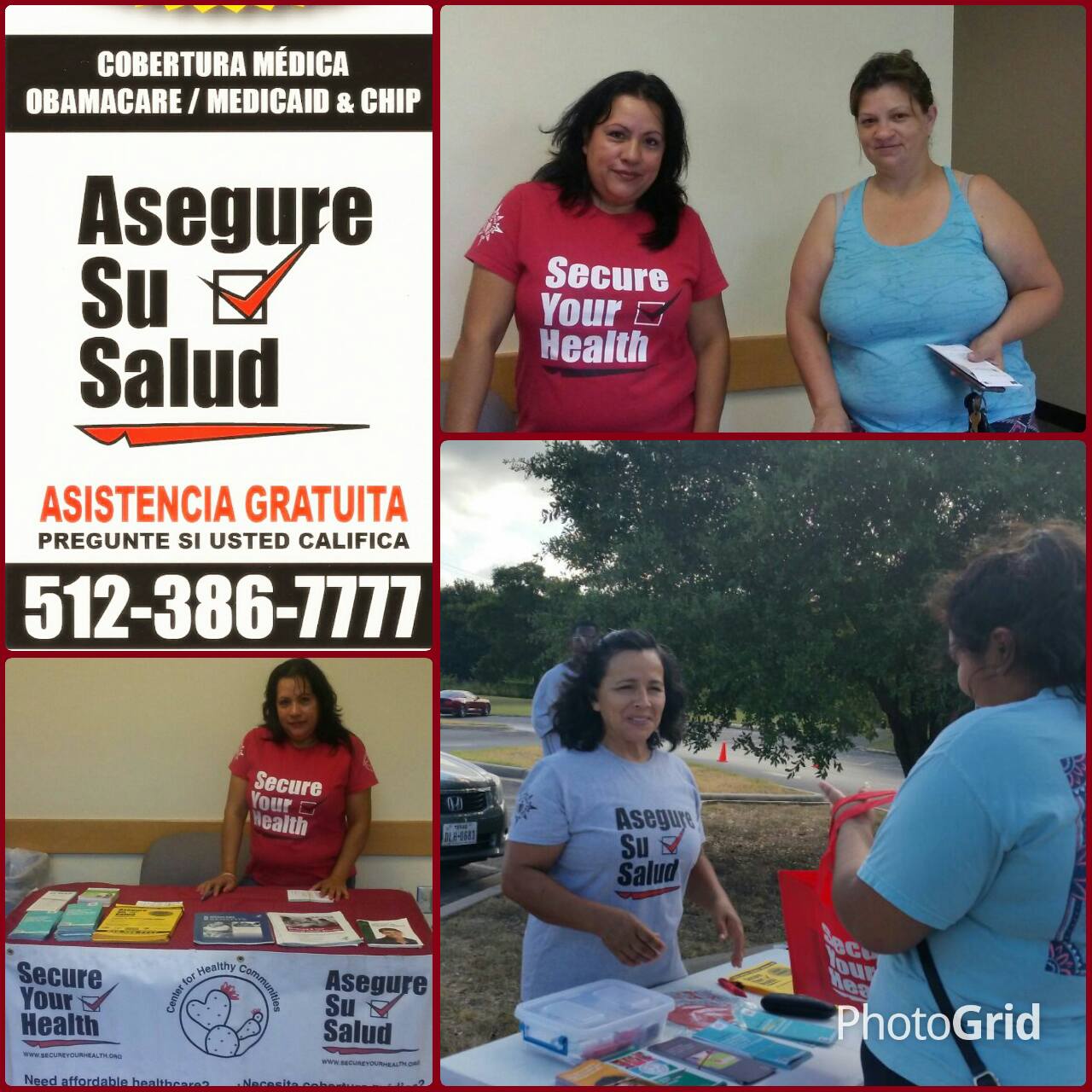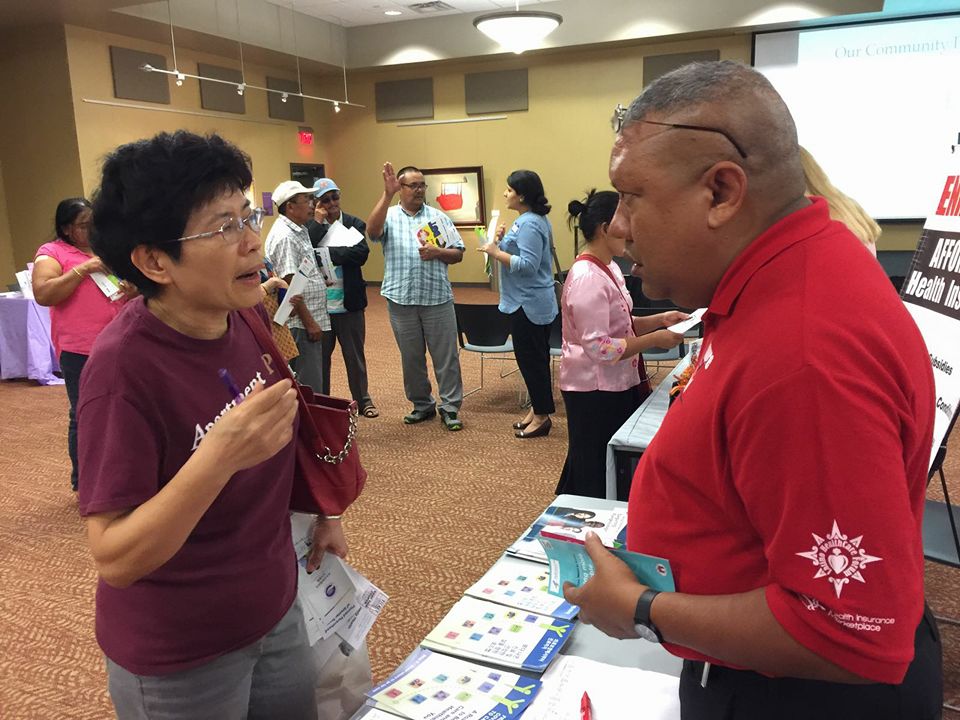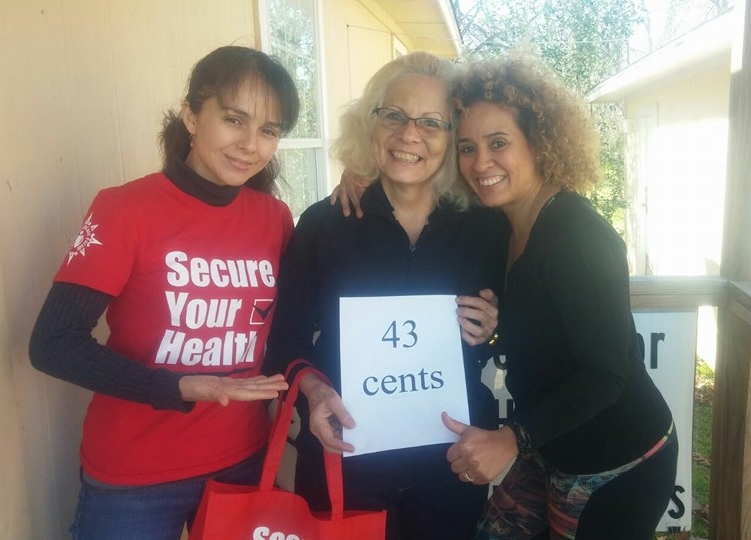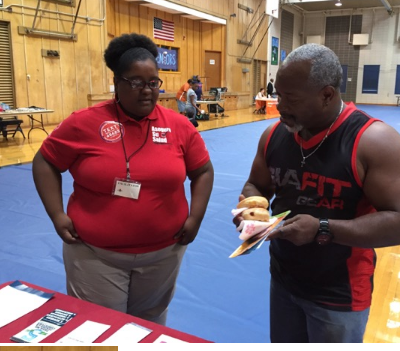As a premier "Champion of Coverage," we strive to educate the community about affordable health insurance. This year we were selected to be the Federal Navigators for Central Texas by the Federal Health and Human Services Department, we are proud to serve our community and use best practices to fulfill our mission and strive to educate our community.
The Secure Your Health program is the Latino HealthCare Forums Outreach, Education and Enrollment effort to get uninsured and underinsured families and individuals covered thru the Health Insurance Marketplace. Commonly known as Obamacare, the Health Insurance Marketplace (HealthCare.gov) provides individuals and families access to health Insurance coverage for preventive health services, doctor visits, drug discounts and hospital services, among other things. In addition, we are also a Community Partner under the State of Texas Health and Human Services Department and offer enrollment assistance for CHIP, Medicaid and SNAP application. Our Certified Community Health Worker Navigators are certified by the Texas Department of Insurance and are extensible trained in best practices and HIPPA compliance. Our team members are also culturally and linguistically competent relative to the communities that they serve. Our staff is friendly and passionate about the work they do to help the community at large overcome challenges from obtaining healthcare information, healthcare insurance or specific services available to them that they would otherwise not benefit from receiving.
Healthcare FAQs
What is the difference between the four categories of health plans (platinum, gold, silver, and bronze)?
All plans sold in the Marketplace cover at least the same basic categories of health care services (learn more in Families USA’s Choosing a Health Plan that’s Right for You), but plans will pay for different amounts of your health care costs. The marketplace makes it easy to compare plans by dividing them into four categories based on how much health care each plan pays for. The categories are platinum, gold, silver, and bronze.
The type of plan you buy matters. Each plan requires you to pay a monthly fee (called a “premium”). But lower monthly premiums won’t always save you money. If you pay more each month in premiums, your plan will also pay more for services (and you’ll pay less out of pocket). But if you pay less each month in premiums, your plan will charge you more for services throughout the year.
Bronze plans pay for the least of your health care, so you have to pay more money during the year for services like doctor visits (but you pay less in monthly premiums). Platinum plans pay for the most of your health care (but you pay more in monthly premiums.)
For example, if you or your family need a lot of doctor visits, the most affordable plan for you might be a plan that charges you more for monthly premiums but less for all of your doctor visits.
What to bring to your appointment
To find out how much financial assistance you are eligible for, please bring the following documents for each household member to your appointment:
Government Issued Picture ID: Driver's License, State ID
Immigration Document: Legal Permanent Resident Card, Certificate of Naturalization
Social Security Card
Employer and Income Information: W-2 Forms, Paystubs, Wage and Tax Statements, etc.
Policy Numbers for Current Health Insurance: Including Medicaid, CHIP, and Medicare Benefits
Valid Email Address: Have your Username and Password available
Who is considered a "Household"? For most families a household includes yourself plus the number of people that you claim as dependents on your income tax return. This may include children, parents, or other relatives who qualify as dependents on your tax return. Children of divorced parents are counted in the household of the parent who claims them as a dependent (even if the other parent has to pay for the child's health insurance). Do not include children who you do not claim as a dependent, even if they still live at home.
Why is there an open enrollment period?
For people who don’t get health insurance from an employer, Medicare or Medicaid, the health law offers a three-month window to shop for health insurance. It is intended to encourage people to get insured and not wait until they’re sick to seek coverage. People who don’t enroll between Nov. 15 and Feb. 15 will have to wait a year to get coverage, unless they experience a major life change, like losing their job, having a child or getting divorced.
Who is eligible to sign up during open enrollment?
Current estimates suggest that there are still about 32 million uninsured people in the United States, and nearly all of them are eligible for some form of coverage under new Affordable Care Act programs. Compared with the country’s population as a whole, the uninsured are more likely to be low-income, Latino, and live in states that have declined to expand their Medicaid programs like Texas. People who are eligible for open enrollment fall into three main categories: the uninsured, people who bought marketplace plans last year (7.1 million), and people who have other forms of individual health insurance (8 million to 12 million).
How much more will the marketplace plans cost?
Overall, insurance plans on the exchanges will be more expensive in 2015 than they were in 2014. But, for people who are willing to switch plans, there are good deals to be had. An upshot analysis of preliminary data from the McKinsey Center for U.S. Health System Reform found that consumers who switch from the most popular plan of 2014 to the cheapest similar plan in 2015 will see an average increase of only 1 percent, while shoppers in some markets could see prices go down. But prices for people who want to stick with their coverage will go up by more.
In many markets we examined, prices are increasing by more than 10 percent for the most popular plan. Most people don’t pay the full price, though. Most people who will sign up for insurance on the new marketplaces will be eligible for income-based tax credits to help them pay; 85 percent of people who signed up coverage this year qualified. Low-income people buying the cheapest plans in some places may even be able to get coverage free. People who are eligible for Medicaid can also get insurance without paying a premium.
How hard is it to pick the right plan?
The marketplaces do a good job of sorting plans into categories based on what percentage of a typical patient’s medical bills will be paid by insurance. All plans in the “silver” category, the most popular plan type, must cover 70 percent of the average patient’s bills, for example. But the details of what each plan in the category covers varies quite a lot.
Are there places to get help picking a plan?
There are groups of people around the country who have been trained to help consumers choose the right plan, either in person or over the phone. The federal government is spending $60 million this year to pay for these helpers. A survey from the Kaiser Family Foundation found that, last year, 10.6 million people who signed up for new coverage sought some help choosing. You can call for assistance at the Latino HealthCare Forum at (855) 373-5424
What happens to people who don't get insurance?
The health law contains a provision requiring Americans to obtain health insurance or face a tax penalty. Those penalties will be higher for 2015 than they were in 2014: up to 2 percent of a household’s income or $325, whichever is higher. People who would struggle to pay for insurance, either because they earn so little that they do not file a tax return or because insurance would cost more than 8 percent of their household income, are exempt. The law also provides exceptions for certain groups that have experienced hardship, including people who are homeless, victims of domestic violence or with religious objections to health care. But the vast majority of Americans will either need to find health insurance or pay the fine. The penalties won’t kick in until people file their taxes for 2015.
Can people get insurance even if they’re already sick?
Before this year, insurance companies were allowed to decide whom they wanted to sell insurance to. This meant that people who had a history of illness often paid very high rates or simply couldn’t find a plan on the individual insurance market. Now, insurers are barred from discriminating against people with a history of health problems. As long as they sign up during the enrollment period, all Americans can buy health insurance for a price based only on where they live, how old they are and whether they smoke.




